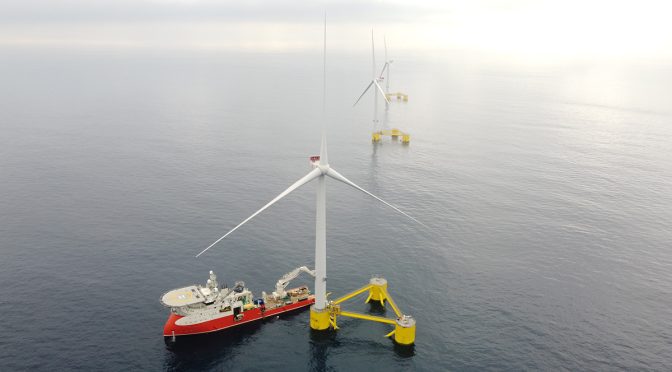The future of offshore wind energy is set to be revolutionized by the integration of artificial intelligence (AI) and machine learning technologies. As the demand for clean and renewable energy sources grows, the offshore wind industry is rapidly expanding, with an increasing number of countries investing in the development of large-scale wind farms. In this context, AI-driven innovations are poised to play a crucial role in enhancing the efficiency, reliability, and cost-effectiveness of offshore wind energy production.
One of the primary challenges faced by the offshore wind industry is the optimization of wind farm layouts to maximize energy production while minimizing costs. Traditionally, this process has been carried out through trial and error, with engineers manually adjusting the position and orientation of wind turbines to find the optimal configuration. However, recent advances in AI and machine learning have opened up new possibilities for automating this process, enabling the development of more efficient and cost-effective wind farm designs.
Machine learning algorithms can analyze vast amounts of data on wind patterns, turbine performance, and environmental factors to identify the optimal layout for a given wind farm. By continuously refining their models based on real-time data, these algorithms can adapt to changing conditions and improve the overall performance of the wind farm over time. This not only leads to increased energy production but also helps to reduce the costs associated with maintenance and repairs, as AI-driven systems can predict potential issues and recommend preventative measures.
Another area where AI-driven innovations are set to make a significant impact is in the field of predictive maintenance. Offshore wind turbines are subjected to harsh environmental conditions, which can lead to increased wear and tear and a higher likelihood of component failure. Regular maintenance is essential to ensure the continued operation of these turbines, but traditional methods can be time-consuming and costly, often requiring technicians to be dispatched to the offshore site.
By incorporating AI and machine learning technologies, offshore wind farm operators can more accurately predict when maintenance will be required, allowing them to schedule repairs and replacements more efficiently. This not only helps to reduce downtime and associated costs but also improves the overall safety of the operation, as potential issues can be identified and addressed before they become critical.
Furthermore, AI-driven innovations are also being applied to the manufacturing process of wind turbine components. By using machine learning algorithms to analyze data from the production process, manufacturers can identify inefficiencies and areas for improvement, leading to higher quality components and reduced production costs. This, in turn, contributes to the overall reduction in the cost of offshore wind energy, making it a more competitive option in the global energy market.
Finally, AI-driven innovations are also helping to improve the integration of offshore wind energy into the wider electricity grid. By analyzing data on energy production, demand, and grid stability, AI systems can help to optimize the distribution of power from offshore wind farms, ensuring that the electricity generated is used as efficiently as possible. This not only helps to reduce the overall carbon footprint of the energy sector but also contributes to the long-term stability and reliability of the electricity grid.
In conclusion, the future of offshore wind energy is set to be transformed by the integration of AI-driven innovations. From optimizing wind farm layouts and predictive maintenance to improving manufacturing processes and grid integration, these technologies have the potential to significantly enhance the efficiency, reliability, and cost-effectiveness of offshore wind energy production. As the demand for clean and renewable energy sources continues to grow, the adoption of AI-driven innovations will be essential in ensuring the long-term success and sustainability of the offshore wind industry.


